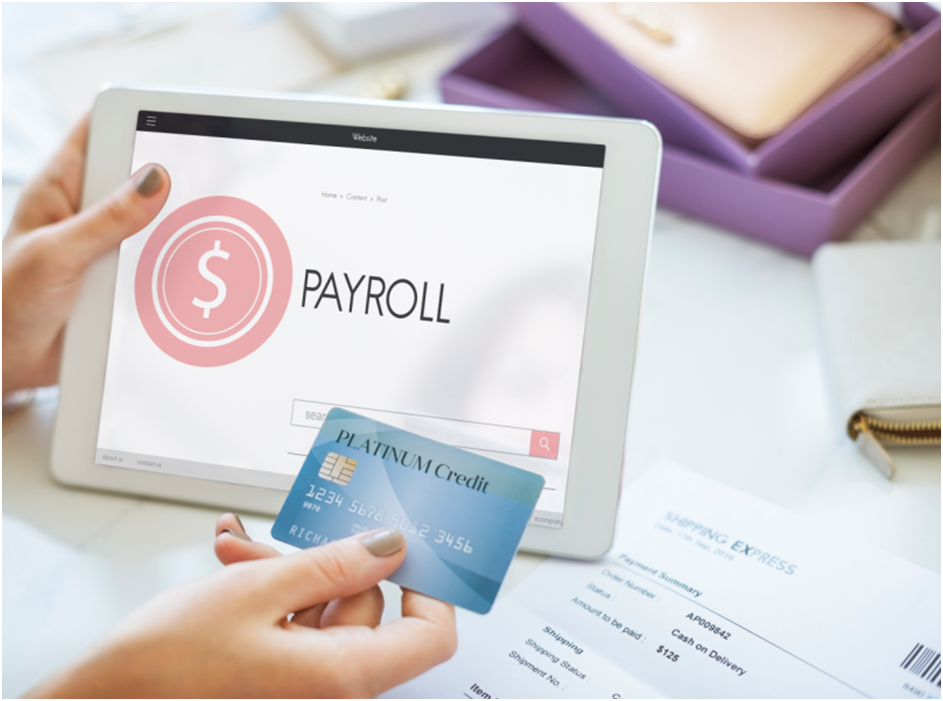PCI Compliance: What It Means and Why It Matters for Your Business
So, you’ve started your own business, and you’re ready to take the world by storm. You have an amazing website set up, a smooth checkout process, and plenty of customers eager to hand over their hard-earned cash. But have you ever stopped to think about how secure your customers’ payment information really is?
If you haven’t, it’s time to buckle up and dive into the world of PCI compliance – a term that may sound complicated, but trust me, it’s crucial for the success of your business.
Picture this: you stroll into a fancy restaurant, ready to indulge in a mouthwatering meal. As you make your way to your table, you glance back to see your credit card information scattered on the floor for anyone to grab. Not an ideal scenario, right? Well, that’s exactly what could happen if your business fails to comply with PCI standards.
PCI compliance, or the Payment Card Industry Data Security Standard (try saying that ten times fast!), is a set of security standards established by the major credit card companies – Visa, Mastercard, American Express, and Discover – to ensure that businesses handle payment card information securely. But, you may ask, why should I care about this jumble of acronyms?
Well, my friend, not only does being PCI compliant protect your customers’ sensitive data, but it also protects your business from hefty fines, lawsuits, and most importantly, a damaged reputation. Imagine if word got out that your website wasn’t secure, or worse, that your business was involved in a major data breach. You’d have customers fleeing faster than a cheetah chasing its lunch, that’s for sure.
Now, you might be asking, “But how do I achieve PCI compliance?” Excellent question, my curious entrepreneur. First, you need to assess your business’s processes and systems to identify any areas of vulnerability. Are you using outdated software? Is your data stored securely? What about your employees – are they trained on handling sensitive information?
Once you’ve pinpointed any potential weaknesses, it’s time to take action. Implement the necessary security measures and train your employees on safe practices. This may include using encryption to protect data, regularly updating your software, and limiting access to payment card information only to those who truly need it.
But remember, achieving PCI compliance isn’t a one-time event; it’s an ongoing process. You’ll need to continually assess and update your security measures to stay ahead of the ever-evolving threat of cybercrime. Just like you wouldn’t leave your mansion unlocked at night, you can’t afford to relax when it comes to protecting your customers’ payment information.
So, my ambitious business owner, let’s sum it all up. PCI compliance is not only about safeguarding your customers’ data but also protecting your business from potential disaster. By ensuring that your business meets the necessary security standards, you can sleep soundly knowing that your customers trust you and your reputation remains intact.
Remember, in the ever-changing world of business, where hackers lurk around every digital corner, being PCI compliant isn’t just an option – it’s a necessity. Secure those credit cards, lock up those passwords, and watch your business flourish while keeping cybercriminals at bay.
Imagine this scenario: You are strolling down the street, basking in the glorious sunshine while checking out some snazzy new shoes in a store window. They are the perfect pair to add some pizzazz to your wardrobe. You walk into the store, heart pounding with excitement, ready to make your purchase. But instead of the seamless experience you were hoping for, you are hit with a rude awakening – the store only accepts cash! Your dreams of sporting those fabulous shoes are shattered, and you are left empty-handed.
Luckily, this sad tale is becoming less common with the rise of the omnichannel retail model and the integration of online and offline payments. So, what exactly is this trendy buzzword and why should we care about it? Well, let me fill you in.
The omnichannel retail model aims to provide customers with a seamless shopping experience, regardless of whether they choose to shop online or in-store. It breaks down the barriers between physical and virtual shopping, offering customers the convenience and flexibility they crave. Want to browse products from the comfort of your couch and then head to the store to try them on? No problem! Prefer to see the items in person and then purchase them online for home delivery? You got it! The omnichannel model removes the limitations of traditional retail and empowers the customer with more choices.
But here’s the thing – to truly unlock the potential of the omnichannel experience, retailers need to ensure a smooth integration of online and offline payments. Picture this: you decide to purchase those amazing shoes online, but when you visit the store to try them on, the cashier has no access to your online order. Frustrating, right? Or perhaps you make a purchase in-store, but when you go to return it through the online channel, you encounter countless hurdles and confusion. Talk about a headache!
By integrating online and offline payments, retailers can eliminate these headaches and create a seamless transaction process for the customer. Imagine being able to buy those shoes online and pick them up in-store, using payment methods you’re comfortable with. Or perhaps you want to make a return and have the option of doing so online or in-store, without any hassles. It’s all about offering customers the convenience they deserve.
But how can this be achieved? Well, it starts with implementing a robust payment system that can handle both online and offline transactions smoothly. This system needs to be seamlessly integrated with the retailer’s inventory management, customer relationship management, and other core systems. By ensuring that all channels are connected and data is synchronized, retailers can create a harmonious shopping experience for their customers.
Additionally, retailers must invest in training their staff to handle both online and offline transactions. The store associates should be equipped with the knowledge and tools to provide personalized assistance to customers, regardless of their preferred shopping channel. This human touch is crucial in creating a positive shopping experience and building customer loyalty.
In conclusion, integrating online and offline payments in the omnichannel retail model is not just a trend – it’s a necessity in today’s fast-paced world. By offering customers the flexibility and convenience they crave, retailers can build stronger relationships and boost their bottom line. So, let’s bid farewell to the era of cash-only stores and embrace the beautiful union of online and offline payments!
In today’s digital age, the ability to conduct transactions online swiftly and securely is paramount for businesses of all sizes. Whether you’re a small startup or a large corporation, navigating the intricacies of online transactions can be daunting. This comprehensive guide aims to demystify the process, offering insights into the world of online payment processing […]
Are you tired of paying those pesky monthly fees for your card processing solutions? Well, fear not my friend, because there may just be a solution for you! In this article, we will dive into the world of no-monthly-fee card processing solutions and discuss their pros and cons.
Let’s start by talking about the pros. Perhaps the most obvious advantage is the money-saving aspect. With no monthly fees, you can say goodbye to those recurrent expenses that eat away at your hard-earned profits. It’s like getting a little extra cash back in your pocket each month! Now, who wouldn’t want that?
Another advantage is the flexibility that comes with no-monthly-fee card processing solutions. These solutions often offer pay-as-you-go options, which means you only pay for the transactions you process. This is particularly beneficial for small businesses or those with inconsistent sales volume. You won’t be tied down to a fixed monthly fee, allowing you to adapt your payment processing to the ever-changing needs of your business.
Now, let’s explore the cons. While the idea of eliminating monthly fees may be enticing, it’s important to consider that no-monthly-fee card processing solutions often have higher transaction fees. Since the provider doesn’t have a steady monthly income from you, they may charge a higher percentage per transaction. This could potentially eat into your profits, especially if you have a high sales volume.
Another downside is the lack of additional perks and services that often come bundled with monthly fee solutions. These could include customer support, fraud protection tools, or added features like online reporting. Without the steady income from monthly fees, providers may not be able to offer these extra goodies. It’s important to assess whether these additional services are crucial for your business before diving into a no-monthly-fee solution.
Lastly, it’s important to do your homework when choosing a no-monthly-fee card processing solution. With the absence of fees, some providers may try to recuperate their costs in other ways, such as increasing the rates for certain transactions or adding hidden fees. Make sure to thoroughly research each provider and read the fine print to avoid any surprises down the road.
In conclusion, no-monthly-fee card processing solutions can be a fantastic option for those looking to save money and have flexibility in their payment processing. However, it’s crucial to consider the higher transaction fees and the potential absence of additional perks and services. So, before making a decision, carefully evaluate your business needs and compare different providers to find the best fit for you. Happy processing!
Biometric payments – a game-changer or a potential privacy nightmare? As technology continues to evolve at an alarming rate, the emergence of biometric payments has undoubtedly been one of the most intriguing developments in recent years. From fingerprint recognition to facial and voice authentication, these innovative payment methods have sparked a whirlwind of excitement and apprehension among both consumers and experts alike.
Imagine strolling into your favorite coffee shop, effortlessly ordering your usual cappuccino, and simply flashing your unique iris pattern to complete the transaction. No need to fiddle for your wallet or remember yet another password. With biometric payments, it’s as easy as a blink of an eye. Sounds like a futuristic dream, right? Well, it’s becoming a reality quicker than we can say, “Where’s my spare change?”
But let’s not get carried away with the fantasies. The introduction of any new technology inevitably raises concerns. And when it comes to something as personal as our biological features, those concerns tend to magnify. Privacy, security, and the potential for misuse are just a few of the skeletons in the biometric payments closet.
On one hand, biometric payments offer unparalleled convenience. With a simple scan or tap, your physical attributes become your keys to the financial world. It eliminates the need for carrying multiple cards, remembering countless PINs, or even dealing with the hassle of lost or stolen wallets. Not to mention, it significantly reduces transaction times, minimizing those annoying queues that seem to suck the joy out of any shopping experience.
But the questions linger – how secure are these transactions? Are we putting too much trust in our unique biological markers? With advancements in technology, hackers find new ways to breach our systems, and the thought of someone gaining unauthorized access to our biometric data is undoubtedly chilling. After all, we can change a password, but what do we do with our fingerprints once they are compromised?
Consumer reactions to biometric payments have been a mixed bag. Some people embrace this new wave of technological convenience with open arms, excited by the possibilities it brings. The idea of being at the forefront of innovation and shaping a future where traditional payment methods are a thing of the past is undeniably appealing to these adventurous early adopters.
However, for others, trepidation and skepticism remain. Concerns over data breaches, technological glitches, and the fear of living in an Orwellian world where our every move is tracked can cast a long shadow over the allure of biometric payments. The reassurances of stringent security measures and robust encryption are met with raised eyebrows, reminding us of the countless times we’ve heard similar promises before.
Ultimately, the emergence of biometric payments is a double-edged sword. It promises a world where payments are seamless, efficient, and highly personalized. Yet, it also raises valid concerns about privacy, security, and the risks associated with storing our biometric data. As we navigate this uncharted territory, time will tell whether biometric payments will become an indispensable component of our daily lives or join the graveyard of failed technological experiments. For now, let’s keep our eyes wide open, our irises ready for the next adventure, and our concerns cautiously alive.
In the modern digital age, where technology is advancing at a staggering pace, the protection of sensitive information has become a paramount concern. One area where this concern is particularly evident is in the realm of cardholder data protection. With the rise of online transactions and the ever-growing importance of e-commerce, it has become imperative to find innovative ways to safeguard our financial information from prying eyes. Enter encryption and tokenization – two superheroes in the battle against data breaches.
Imagine a world where every time you make a purchase with your credit card, your information is immediately encrypted into an indecipherable code that only the intended recipient can decode. That’s the power of encryption. It takes your cardholder data and transforms it into an unreadable format using sophisticated algorithms, ensuring that even if it falls into the wrong hands, it remains useless and undecipherable. It’s like your personal information is wearing its own invisibility cloak, keeping it hidden from potential threats.
But encryption is just the beginning of this digital fortress. Tokenization steps in to add an extra layer of protection. This superpower works by replacing your sensitive information with unrelated, random characters, making it virtually impossible to trace back to the original data. Much like a shape-shifter that can morph into anyone or anything, tokenization effectively renders your cardholder data useless, even if someone manages to get hold of it.
The beauty of these dynamic duo technologies lies in their ability to work together seamlessly, eliminating vulnerabilities that might arise if used alone. With each transaction, encryption encodes your data, and tokenization replaces it with a random code, ensuring a watertight shield that keeps your information safe and sound.
So, how do these guardian angels work their magic? When you make a purchase online, for instance, your sensitive information is encrypted as it travels from your device to the merchant’s server. Once it reaches its destination, tokenization leaps into action, replacing the encrypted data with a random token. This token is then stored by the merchant, rather than your actual card information. This means that in the event of a data breach, hackers would only lay hands on this tokenized data, which is essentially useless to them. Your card information, on the other hand, remains secure in an undisclosed location, free from prying eyes.
The benefits of encryption and tokenization go far beyond just safeguarding your data. By adopting these technologies, businesses can also protect themselves from the dire consequences of data breaches. Whether it’s reputation damage, regulatory fines, or loss of customer trust, the fallout from such incidents can be catastrophic. Encryption and tokenization act as the ultimate risk mitigators, ensuring that businesses can continue to operate smoothly without the looming specter of data breaches.
In a world where cyber threats are omnipresent, it’s reassuring to know that there are heroes out there working tirelessly to keep our cardholder data safe. Encryption and tokenization represent a dynamic duo, fighting in unison to protect our information from falling into the wrong hands. With their superpowers, we can confidently embrace the convenience of digital transactions, knowing that our financial well-being is well-guarded.
In the fast-paced world of global e-commerce, cross-border payments have become an integral part of conducting business. Today, advancements in technology are revolutionizing the way we make international transactions, allowing businesses to expand their reach and tap into new markets with ease. From online marketplaces to digital wallets, the options for seamless cross-border payments are endless.
One of the most exciting developments in this space is the rise of peer-to-peer platforms, which connect buyers and sellers across borders. These platforms eliminate the need for intermediaries such as banks, enabling direct transactions between parties. Imagine selling handcrafted jewelry online and instantly receiving payments from customers in far-flung corners of the globe—sounds like a dream come true, right? Well, with peer-to-peer platforms, this dream is turning into a reality.
Additionally, the integration of blockchain technology into cross-border payments has brought forth unprecedented security and efficiency. Blockchain, the underlying technology behind cryptocurrencies like Bitcoin, allows for transparent and tamper-proof transaction records. This eliminates the need for trust between parties, as the decentralized nature of blockchain ensures that transactions are verified by a network of computers. As a result, cross-border payments are faster, cheaper, and more secure than ever before.
Another exciting advancement in cross-border payments is the emergence of digital wallets. Gone are the days of carrying bulging wallets full of foreign currency and exchanging money at unfavorable rates. With digital wallets, all you need is your smartphone to make payments in multiple currencies. These wallets provide a seamless experience for both buyers and sellers, allowing for instant transactions and flexibility in managing funds. Whether you’re purchasing goods from a foreign retailer or paying for a service overseas, digital wallets make cross-border payments a breeze.
Furthermore, the widespread adoption of mobile technology has paved the way for innovative payment solutions. For instance, many countries in Africa have leapfrogged traditional banking infrastructure and embraced mobile money as the primary means of conducting financial transactions. With just a simple feature phone, individuals can send and receive money, pay bills, and even access microloans. This has opened up a world of opportunities for small businesses in rural areas, allowing them to participate in the global economy like never before.
As cross-border payments continue to evolve, it’s crucial for businesses to stay ahead of the curve. Understanding and embracing these advancements can be the key to unlocking new growth opportunities and reaching a global audience. By leveraging peer-to-peer platforms, blockchain technology, digital wallets, and mobile payment solutions, businesses can overcome barriers and tap into the vast potential of cross-border e-commerce. So, whether you’re a small-scale entrepreneur or a giant multinational corporation, it’s time to embrace the future of cross-border payments and embark on a truly global journey. The possibilities are endless!
Are you tired of dealing with confusing currency conversions when traveling abroad? Well, fret no more! International hospitality services are now implementing dynamic currency conversion, making your travel experiences smoother than ever before. Say goodbye to those dreadful moments of staring blankly at exchange rate boards, desperately trying to figure out if you’re getting a good deal. With dynamic currency conversion, your worries will vanish into thin air!
But hold on, you might be wondering, what exactly is dynamic currency conversion? Well, my curious friend, it’s a nifty service that allows you to pay for goods and services in your own home currency. Imagine being in Paris, sipping on a latte at a charming café, and effortlessly paying in US dollars. No math, no confusion, just pure financial bliss!
So how does this magical system work? Let me break it down for you. When you make a purchase using your credit card, the terminal scans your card and shows the amount in the local currency, as well as the equivalent amount in your home currency. It takes into account the latest exchange rate, and voila! You now have the option to pay in your own currency or the local currency. Can it get any easier than that?
Not only does dynamic currency conversion simplify your life, but it also provides transparency for your financial transactions. No more hidden fees or surprise charges eating away at your vacation budget. You’ll know exactly how much you’re paying and have the peace of mind of knowing that you’re getting the best possible rate.
Now, you might be wondering, where can I experience the wonders of dynamic currency conversion? Fear not, my fellow wanderer, as this convenient service is being adopted by an increasing number of hotels, restaurants, and shops worldwide. From the vibrant streets of Tokyo to the sunny shores of Ibiza, international hospitality services are jumping on the bandwagon to make your journey even more enjoyable.
But as with any innovation, there are always a few things to keep in mind. While dynamic currency conversion provides ease and simplicity, it’s essential to evaluate the exchange rate being offered. In some cases, the conversion rate may not be as competitive as what you could get from your own bank. It’s always wise to compare rates and make an informed decision to ensure you’re getting the best deal.
So, my fellow travel enthusiasts, say goodbye to the headaches of currency conversions and embrace the ease of dynamic currency conversion. With its widespread adoption in international hospitality services, your globetrotting adventures will be filled with more joy and less financial confusion. So pack your bags, grab your passport, and get ready to explore the world, one dynamic currency conversion at a time!
In this day and age, our smartphones have become more than just a device to make calls or send text messages. They have transformed into digital powerhouses that can handle almost any task we throw at them — including mobile payments. With just a tap of a finger, we can now conveniently pay for our morning coffee, movie tickets, or even groceries. But as with any convenience, there are always risks involved, and securing these mobile payments is no exception.
One of the biggest challenges faced when it comes to securing mobile payments is the vulnerability of our smartphones. These little gadgets carry a wealth of personal and financial data, making them a prime target for cybercriminals. Any lapse in security can lead to disastrous consequences, such as unauthorized transactions, identity theft, and financial loss. So, how can we address this challenge and ensure the safety of our mobile payments?
One solution lies in the development of secure payment technologies. Companies and financial institutions are continuously investing in state-of-the-art encryption methods, biometric authentication systems, and tokenization techniques to safeguard our transactions. From using fingerprints or facial recognition to verify our identities to generating unique tokens for every transaction, these advancements are making it increasingly difficult for hackers to infiltrate our mobile payments.
Another crucial aspect of securing mobile payments is user awareness and education. Technology is evolving at a rapid pace, and it is essential for users to stay informed about the latest security threats and techniques. By understanding the risks and being cautious of phishing attempts, suspicious apps, or unsecured networks, we can take proactive steps to protect ourselves.
Furthermore, financial institutions and app developers need to collaborate to establish robust security protocols. Implementing multi-factor authentication, requiring strong passwords, and regularly updating security patches are just a few measures that can be taken to mitigate risks. Regular audits and vulnerability assessments should also be conducted to identify any weaknesses and patch them before they can be exploited.
While the responsibility of securing mobile payments primarily lies with the users and the payment service providers, government regulations also play a vital role. Governments need to foster an environment that encourages innovation while also ensuring stringent security standards. By setting regulations and enforcing compliance, they can help create a safer ecosystem for mobile payments.
Securing mobile payments may seem like a daunting task, but with the right combination of advanced technologies, user awareness, collaboration, and regulatory support, it can be achieved. As we continue to rely more heavily on our smartphones for financial transactions, it is imperative that we prioritize the security of our mobile payments. By doing so, we can enjoy the convenience while keeping our personal and financial data safe from prying eyes in the digital realm.
In today’s rapidly evolving digital landscape, businesses must stay ahead of the game to succeed. One crucial aspect of maintaining competitiveness is adopting innovative payment solutions that cater to the global market. Gone are the days when cash was king, and credit cards were the only viable option. It’s time for businesses to break free from traditional payment methods and explore the vast possibilities that cutting-edge technology brings.
Enter a world where digital wallets, cryptocurrencies, and mobile payment platforms reign supreme. These revolutionary payment solutions not only offer convenience, but they also break down barriers for businesses with global aspirations. Imagine being able to accept payments from customers located on the other side of the globe, without worrying about costly transaction fees or currency conversions. The possibilities are limitless, and the benefits are undeniable.
One such innovative solution is the rise of digital wallets. With the click of a button, customers can securely store their payment information, making purchases effortless and seamless. Digital wallets like Apple Pay, Google Pay, and PayPal have simplified the customer experience, making it easier for businesses to close the sale. What’s more, digital wallets have transcended geographical boundaries, making them an indispensable tool for businesses with a global reach.
But digital wallets are just the tip of the iceberg. Cryptocurrencies have also emerged as a game-changer in the world of payments. From the renowned Bitcoin to the promising Ethereum, these virtual currencies offer flexibility, security, and anonymity. Businesses embracing cryptocurrencies can expand their customer base to include tech-savvy individuals who prefer decentralized alternatives. Additionally, blockchain technology, which underpins most cryptocurrencies, ensures transparent and immutable transactions, eliminating the need for intermediaries and reducing costs.
Mobile payment platforms are another game-changing solution that businesses can explore. With the proliferation of smartphones, it comes as no surprise that businesses are harnessing the power of mobile payment apps. From industry giants like Alipay and WeChat Pay in China to Samsung Pay and Venmo in the United States, these platforms enable businesses to tap into the vast market of mobile users. By providing a seamless and convenient payment experience, businesses can attract loyal customers and boost sales.
The benefits of exploring innovative global payment solutions extend beyond convenience and reach. By embracing these technologies, businesses can also gain a competitive edge. They can establish themselves as pioneers in their industry, staying a step ahead of competitors who are still stuck in the traditional payment methods. Moreover, innovative payment solutions allow businesses to adapt to the changing needs and preferences of their customers, enhancing the overall customer experience.
In conclusion, businesses worldwide must embrace innovative global payment solutions to thrive in the digital era. The rise of digital wallets, cryptocurrencies, and mobile payment platforms offers unparalleled opportunities for businesses to flourish. With convenience, global reach, enhanced security, and competitive advantage as primary advantages, there’s no denying that exploration of these payment solutions is the way forward. So, let’s break free from the clutches of tradition and embark on an exciting journey to revolutionize the way we do business globally.











